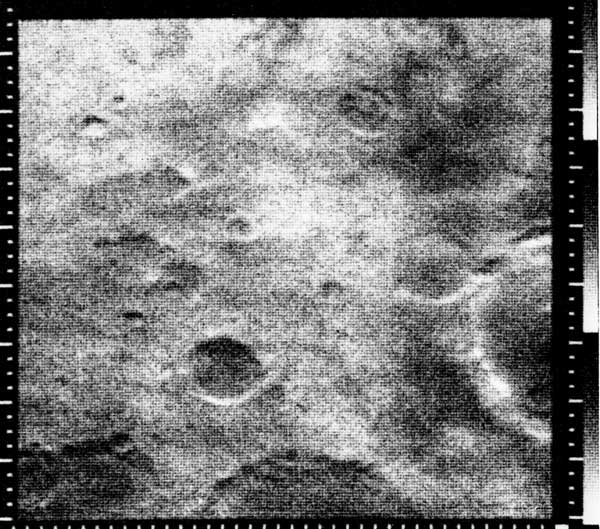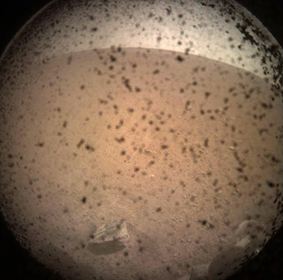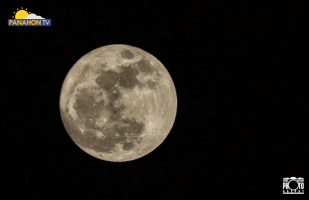Can We Live on Mars?
Can other planets supporting life? Are we alone in this vast universe? These are some of the questions curious minds are interested in. And it’s this intense kind of curiosity that has led to one of our most ambitious space projects, the Mars Exploration.
Meet Mars
Mars is sometimes called the “Red Planet”. It’s red because its surface has iron oxide or rusty particles. Its only half size of Earth and like our planet, Mars has volcanoes, weather, seasons, polar ice caps and canyons. Its thin atmosphere is made of nitrogen, argon and carbon dioxide. These characteristics encouraged scientist to dig deeper into Mars’s history to find out if it once supported life – and maybe able to in the future.
The Mars Mission
So far, almost 50 spacecraft have visited Mars, but not all of them were successful in landing on its surface or in orbiting around the planet. Mars is the only planet scientists have sent rovers to –. These vehicles drive around the planet to take photos and measurements.
Scientists begun to send probes to the red planet in 1960. But Mars Exploration Program funded and led by the National Aeronautics and Space Administration (NASA), officially begun in 1994. The first six spacecraft all failed to reach Mars orbit.

Courtesy: NASA
Mariner 4 was the first successful flyby attempt that entered the planet’s orbit, arriving on July 14, 1965. This mission provided the first close up images of the planet.
The most recent successful landing on Mars happened just last November 2018. The Interior Exploration using Seismic Investigations, Geodesy and Heat Transport (InSight), is a robotic lander designed to study the deep interior of the planet and to listen to Marsquakes.
The Possibilities of Mars
Scientist are exploring Mars to determine if life ever arose on Mars, to characterize its climate and geology; and ultimately, to prepare for the human exploration of Mars. The Mars Exploration Program is a science driven program that seeks to understand whether Mars was, is, or can be, a habitable world.

Courtesy: NASA
Terraforming is the primary ingredient of the concept of Mars – colonization. This is a speculative course of alteration of the conditions of the planet to make it habitable for lives that are existing on Earth without any life supporting system.
In order to make Mars a habitable planet, Bruce Jakosky, a planetary scientist and principal investigator for NASA’s Atmosphere and Volatile Evolution and Christopher Edwards an assistant professor for planetary science, said that by using greenhouse gases that already present on Mars, we could, theoretically, raise temperature and change the atmosphere enough to make Mars an Earth – like.
Mars has exactly opposite problem as Earth. Mars as we all know is a cold planet, in fact the current climate on Mars is at average of about minus 81 degrees Fahrenheit (– 62.78°C), though the temperature can vary wildly. That is why scientists want to make Mars hotter and thicken its atmosphere, so its polar ice caps can melt. Considering more water means more opportunities for microbial life to do its work.
The idea of using microbes to begin a terraforming project on Mars is so encouraging that NASA has already begun initial tests. The Mars Ecopoiesis Test Bed is proposed for development to be included with future robotic mission to Mars. This is something look like a drill with hollow chamber inside with container full of cyanobacteria. The drill would bury itself in the Martian soil, preferably in a place with the presence of liquid water and then the container with cyanobacteria would be release into the chamber and the built – in biosensor would detect whether the microbial life produce any oxygen or other bvproducts.
The first phase of this project was conducted in a simulated Martian environment here on Earth, and the results were promising. But even still, there are some major challenges we’ll have to face if ever we want to use microbially terraform Mars on a large-scale.
Conclusion
We are clearly excited about what the future may bring. Pushing ahead, trying to understand what Mars may have for us. Uncertain of what the outcome may be, but McKay once said, “Life may not be scientifically preferred explanation, but it cannot be yet disproven”.
By: May Dacula, PanahonTV Intern
Sources:
https://history.nasa.gov/marschro.htm
https://science.nasa.gov/solar-system/programs/mars-exploration
https://bigthink.com/surprising-science/using-bacteria-to-terraform-mars
“The moon is a loyal companion. It never leaves. It’s always there, watching, steadfast, knowing us in our light and dark moments, changing forever just as we do. Every day it’s a different version of itself. Sometimes weak and wan, sometimes strong and full of light. The moon understands what it means to be human. Uncertain. Alone. Cratered by imperfections.”
– Tahereh Mafi
Nights aren’t not complete without the presence of the moon. Let’s get to know our nocturnal friend better with these fun facts:
1. It’s smaller than the Earth.
The National Aeronautics and Space Administration (NASA) says that the radius of approximately 1,737.5 kilometers. If the Earth were the size of a nickel, the moon would just be as big as a coffee bean.
NASA added that around 30 Earth-sized planets could fit in the distance between our planet and the moon, which is 384,400 kilometers away.
2. You can’t live on the moon.
According to NASA, the moon has a very thin and weak atmosphere, which doesn’t protect it from the sun’s radiation or impacts of meteoroids. This is also the reason why temperatures on the moon are extreme, ranging from boiling hot to freezing cold depending on the orientation of the sun.
Astronauts who explored the moon were equipped with spacesuits that had several layers of insulation and equipped with internal heaters and cooling systems.
3. The moon is responsible for the rising and falling of ocean tides.
Around each new and full moon, the pull on the tides increases due to the gravity of the sun that reinforces the moon’s gravity. During these phases, the tides are at their maximum.
Meanwhile, during the first quarter and last quarter phase, the sun’s gravity works against the gravity of the moon. This is when the tide’s range is at its minimum.
4. There may be earthquakes on the moon!
NASA confirmed that the moon may be seismically active. This is based on data gathered between 1969 to 1972, when Apollo astronauts placed seismometers at their landing sites on the moon.
Because the moon is dry, cool and mostly rigid, moonquakes are continuous unlike earthquakes that usually last for half a minute.
5. The moon has its own festival.
The Moon Festival is a holiday in China and several Asian countries. It’s one of the most important celebrations in the Chinese calendar, traditionally held when the moon is at its fullest and roundest.
This event gathers families and friends that admire the bright mid-autumn moon and eat moon cakes. Moon cake is a sweet pastry with red bean or lotus-seed filling. It is believed to be the symbol of completeness and unity among families.

Photo by: Bobs Artajo, one of the Top20 Supermoon Photo Contest winners
6. The full moon has a different name each month.
The names of the Full Moon originated from the Algonquin tribes of Native America which was adapted by some of the Colonial Americans.
January – Full Wolf Moon
It is believed that this full moon appeared when wolves howled in hunger.
February – Full Snow Moon
Usually the heaviest snow falls in February, making hunting difficult.
March – Full Worm Moon
During spring, the ground softens and earthworm casts reappear. Also known as the Sap Moon, it marks the time when maple sap begins to flow and the annual tapping of maple trees begins.
April – Full Pink Moon
This full moon signaled the appearance of the moss pink or wild ground phlox, one of the first spring flowers.
May – Full Flower Moon
Flowers become abundant during this month.
June – Full Strawberry Moon
The Algonquin tribes consider this moon as a sign of the perfect time to gather ripening strawberries. It is sometimes called as the Rose Moon.
July – Full Buck Moon
During this time, the antlers of bucks are in full-growth mode.
August – Full Sturgeon Moon
Some Native American tribes knew that the sturgeon, or a type of fish that lives in the northern part of the world, was mostly caught during this full moon.
September – Full Corn Moon
This corresponds with the time of harvesting corn.
October – Full Hunter’s Moon
This is the time for hunting as preparation for the long winter ahead.
November – Full Beaver Moon
This is the time when beavers actively build their winter dams in preparation for the cold season.
December – Full Cold Moon
This is the month when the winter cold speeds up.
7. The moon doesn’t have its own light.
The moon merely reflects light from the sun. The light that we see from the moon is an illusion of the reflected light.
Astronomers say it will take hundreds of thousands of moons to get the same brightness of the sun. Even when a moon reaches its full phase, it always shines with a lower magnitude that the sun.
8. The US first conquered the moon.
According to NASA, there were three men who first stepped in the moon. Neil Armstrong, Edwin Aldrin and Michael Collins were the astronauts on the successful Apollo 11 mission in 1969. Armstrong and Aldrin landed on the moon while Collins stayed in orbit around the moon, doing experiments and taking images.
On July 20, 1969, Neil Armstrong became the first human to step on the moon. He and Aldrin were able to walk around the moon for a few hours, picking up bits of dirt and rocks for experiments. They also installed a U.S. flag on the moon.
9. The moon has inspired idioms!
“Once in a blue moon” refers to an even that is rare, seldom or surreal. Blue Moon refers to the second full moon in a month. Normally, there is one full moon each month but there are also rare instances that a second one sneaks in.
This doesn’t literally mean that the moon turns into a bluish color. However, it is believed that during the 1883 Krakatoa Volcano explosion in Indonesia, people noticed that the moon turned blue. Scientists explained that this phenomenon was more likely because of the ash clouds that rose to the top of the Earth’s atmosphere.
10. Some people love staring at the moon!
If you are fond of staring at the moon, you may be a “selenophile” or a person who loves the moon. “Selene” is the Greek name for the Goddess of the Moon while the suffix “phile” comes from the Greek “philos” which means “loving”.
Sources:
National Aeronautics and Space Administration (NASA)
http://www.moonconnection.com
https://www.space.com
http://earthsky.org
http://aa.usno.navy.mil
http://seismo.berkeley.edu/blog/2009/07/20/quakes-on-the-moon.html
Every March, Women’s Month is celebrated worldwide. This observance is rooted in the different activities of women in the early 20th century, where women’s rights and other social concerns were raised. These include low wages, lack of protection and the unjust working conditions of women workers during that time.
Looking back at the time before the mid-19th Century, education for women was limited as they were taught to mostly focus in religion, singing, dancing and other skills and knowledge that would prepare them in their traditional roles of being wives and mothers.
Back then, teaching was the only acceptable occupation for women. There was a wide gender gap in most professions, especially the male-dominated fields of science, including meteorology.
According to the National Oceanic and Atmospheric Administration (NOAA), more women officially began entering the world of weather forecasting in 1942 because men were needed in the war. When Pearl Harbor was bombed, only two women were working in the observation and forecast staff of the Weather Bureau in the United States.
In 1942, the Weather Bureau issued the following announcement:
OPPORTUNITY FOR WOMEN IN METEOROLOGICAL WORK
“Although there has been much prejudice against and few precedents for employing women generally for professional work in meteorology, perhaps a dozen women have obtained meteorological positions in the last few years, mostly outside the government service. However, since there is at present an acute shortage of both trained meteorologists and men for observers and clerical positions in the Weather Bureau and other government agencies, airlines, etc., women with the proper qualifications (same as for men) are now being welcomed in many places where they were not encouraged even last year. (In England women have already taken over many meteorological posts, we hear.) Therefore, women with training or experience in meteorology or its branches should apply immediately for any of the current or forthcoming U.S. Civil Service examinations in meteorology which are open to them… This will be an opportunity to join the vanguard of the many women who will very likely find careers in meteorology in the not too distant future and at the same time it will be a patriotic choice in case the war should require many women to replace or supplement men as meteorologists.”
Over 900 women became part of the Weather Bureau, mostly in clerical positions or as junior observers. Many of them worked as temporary employees but were changed to permanent status later on.
Here are some of the women in history who excelled in conventionally male disciplines like science and mathematics, leading them to leave their mark in the field of meteorology:
Sarah Frances Whiting (1847-1927, American)
Whiting did not have the chance to obtain formal education but her father, Joel Whiting, tutored her in mathematics and physics. As the first woman to join the New England Meteorological Society, she assembled a meteorological station where she imparted her knowledge by teaching. Her students gathered data for the U.S.Weather Bureau.
She was also known for establishing the first physics laboratory for women and the astronomical observatory in Wellesly. Whiting set up the second undergraduate physics laboratory, and was able to produce the first X-ray photographs in the United States.
Famous for using the spectroscope, a wiring diagram for an apparatus utilized in generating electric sparks, Whiting also wrote several astronomical articles and was able to publish a book entitled “Daytime and Evening Exercises in Astronomy.”
Eleanor Anne Ormerod (1828-1901, English)
Provided by her mother with a general education, Ormerod learned to speak and write in various languages including English, French, Latin, Italian, Spanish, Dutch and Norwegian. She was known for her illustrations that complemented her published works.
Ormerod was awarded by the Royal Horticultural Society for her study of insects, determing which were beneficial for gardeners and which were pests.
She became interested in meteorology when she moved to Torquay with his brother, George Wareing Ormerod, who took meteorological observations and became a Fellow of the Royal Meteorological Society in 1874. Because of him, Ormerod’s curiosity about the weather and its relationship to insects grew.
Ormerod later on became the first woman Fellow of the Royal Meteorological Society. She built her own meteorological station at Isleworth, published manuscripts and assembled decades of observations from other weather stations.
Caterina Scarpellini (1808-1873, Italian)
Scarpellini was the founder of the Meteorological Ozonometric Station in Rome. As a meteorologist in Rome, she preserved records of the weather and ozone conditions, and was able to publish different manuscripts about ozone and coastal squalls.
Eleanor Stabler Brooks (1892-1986, American)
Wife of a founder of the American Meteorological Society, Charles S. Brooks, Eleanor Brooks was also a known meteorologist herself. She worked at the Blue Hill Observatory and became an indexer for the Bulletin of the American Meteorological Society for ten years.
The Brooks couple helped each other in producing a daily weather article for newspapers entitled “Why the Weather?” and was later on published as a book.
Joanne Simpson (1923-2010, American)
Because of her fascination with clouds as she sailed in her small catboat, Simpson became interested in the weather. After her Master’s Degree, she moved on to a Ph.D. program. That time she was told by a faculty member that no woman ever got a Ph.D.in meteorology and if anyone did, she would still end up unemployed.
Instead of losing hope, Simpson completed a course under Herbert Riehl, known as the “father of tropical meteorology”. She focused on tropical cumulous clouds and with her strong perseverance, was able to make Riehl her Ph.D. advisor.
She filmed clouds on long flights and drew maps of cloud formations. Simpson was the first meteorologist to reveal patterns that are now shown by satellites that helped describe the role of clouds in global atmospheric circulation. Simpson pursued her studies and observations, leading her to become the first woman to hold a Ph.D.in meteorology.
Mentioned above are just some of the women who excelled in the history of meteorology. This only proves that women have contributed a remarkable impact in the field of science. What we have today and how we track the atmosphere are fruits of their exceptional ideas, ideas that will come a long way and will lead to future innovations.
Sources:
http://passporttoknowledge.com/storm/who/bios/women1.htm
http://earthobservatory.nasa.gov/Features/Simpson/simpson2.php
http://www.history.noaa.gov/stories_tales/women6.html
https://books.google.com.ph/books?id=nFt6csjzc48C&pg=PA462&lpg=PA462&dq=Sarah+Frances+Whiting+meteorology&source=bl&ots=GyEPnoaBK6&sig=eBpKk3U2SXiFzKkZ6lH3Lp3caJw&hl=en&sa=X&ei=SZn-VMC-MtH48QW8s4GwAw&ved=0CEwQ6AEwDA#v=onepage&q=Sarah%20Frances%20Whiting%20meteorology&f=false






